Visit Lam Kinh relic site
Lam Kinh is a national relic site with a history of hundreds of years with unique imperial architecture. It was thought to be a forgotten ancient capital, but now Lam Kinh has emerged as a spiritual tourist area containing many mysterious legends.
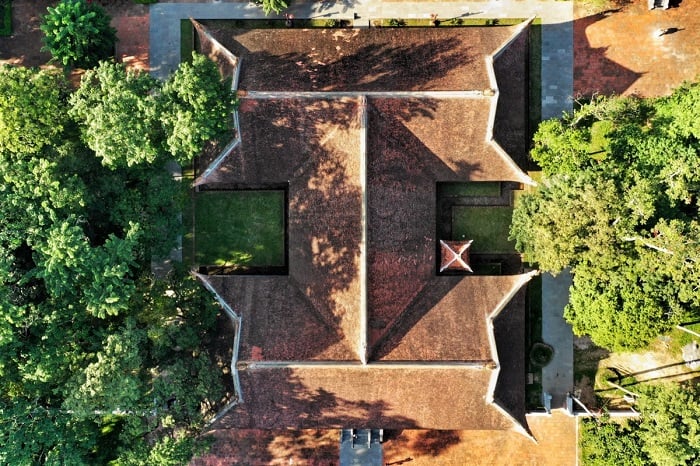 Lam Kinh – the ancient capital in Thanh Hoa (Photo: VnExpress)
Lam Kinh – the ancient capital in Thanh Hoa (Photo: VnExpress)Lam Kinh is a famous tourist destination in Thanh Hoa for those who love history and want to discover ancient things. Considered a historical relic with many interesting things of the most prosperous dynasty in Vietnamese history, the ancient capital Lam Kinh promises to bring you unforgettable experiences.
1. Where is Lam Kinh?
Lam Kinh is the ancient capital built by King Le Loi in 1428, starting the victory against the Ming invaders. This place was built as a citadel in the king’s hometown for the purpose of worshiping ancestors and letting the kings rest.
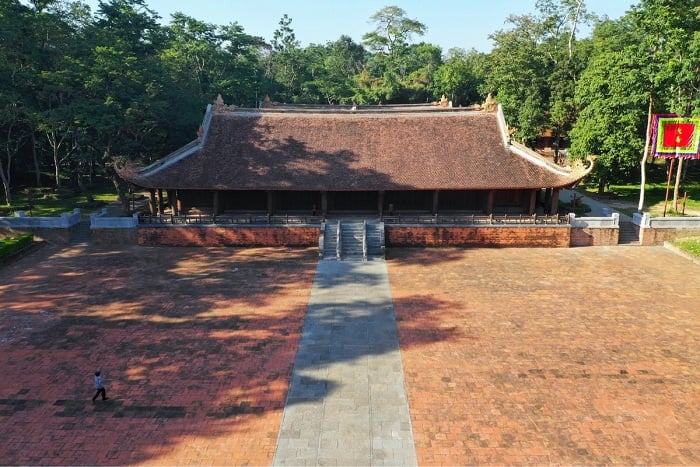
Lam Kinh historical site is also known as Dong Kinh, with an area of about 200 hectares, located in H. Tho Xuan, T. Thanh Hoa. The space here is spacious and peaceful with trees surrounding many temples and mausoleums.
2. Explore Lam Kinh architecture in the ancient capital
As famous, the ancient capital Lam Kinh attracts visitors by its extremely unique design architecture. This place was built with main areas: electricity, temples, tombs and areas for walking and relaxing.
- Dien Citadel was built in the way of “squaring to the water”, surrounded by Dau mountain in the north, Chu river – Chua mountain in the south, Phu Lam forest in the east and Huong mountain – Ham Rong mountain in the west. This is the gold standard in feng shui of Asians, helping Lam Kinh to always be prosperous and peaceful.
- The areas of Imperial Citadel, Thai Mieu, and Palace are arranged in the shape of a chessboard, including the Ngo Mon Gate, the Dragon Court, the main hall, the Thai Mieu…
2.1. Pearl river
Ngoc River originates from Tay Ho, flows around Lam Kinh area and is the path leading you into the citadel. The river has clear water, you can completely “look in the mirror” or look at the round stones at the bottom.
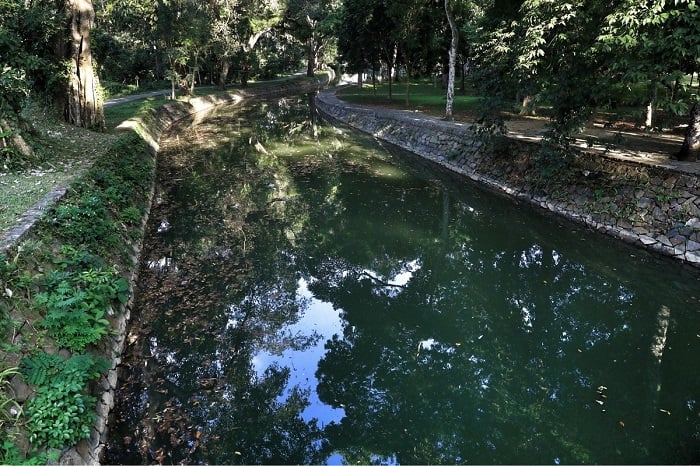
2.2. Bach Bridge – Tien Loan Kieu
Bach Bridge, also known as Tien Loan Kieu, is crossed over the Ngoc River, bent according to the architecture of “upper family lower house” – the main path leading visitors to Lam Kinh.
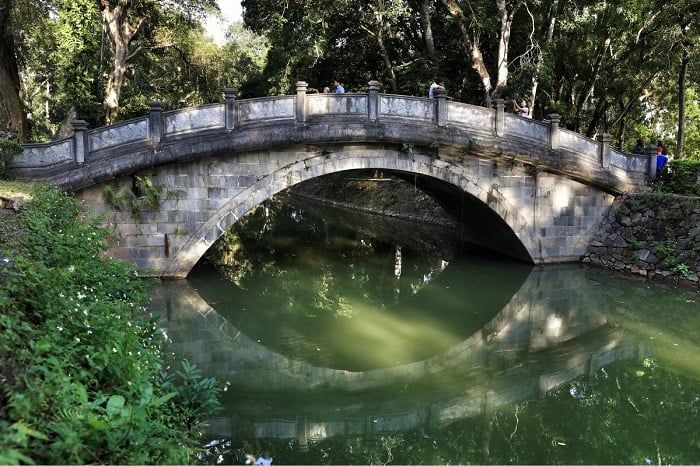
2.3. Ngoc Lam Kinh Well
On the entrance to the citadel, about 50m from Bach bridge, you will encounter Ngoc well – the place that supplies water for Lam Kinh. Ngoc Well is green and full of water all year round. Previously, the well was planted with lotus flowers, which are very beautiful and fragrant in the blooming season.
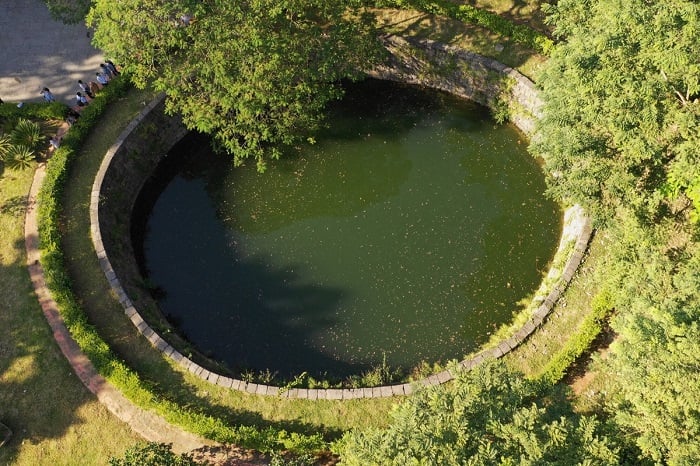
2.4. The entrance to the Main Hall
The main hall is the area with the largest scale in Lam Kinh with the main architecture made of wood (138 columns, currently 127 foot columns). To enter the main hall, you need to move through Ngo Mon Gate nearly 20m wide with 3 compartments (middle, side and ground).
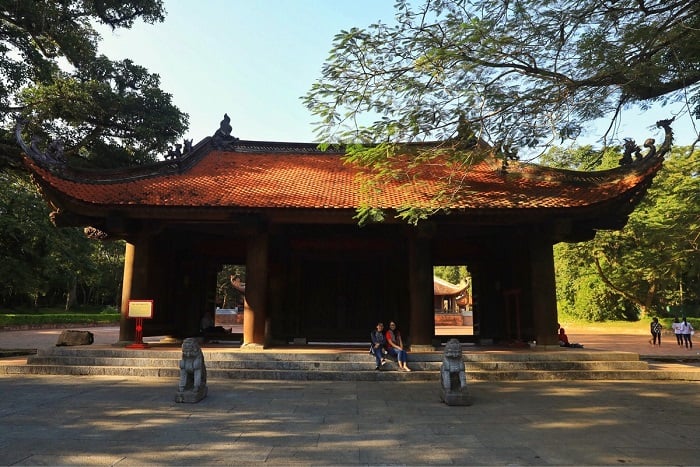
In front of the Ngo Mon Gate, you will see a stone clam standing guard hundreds of years old, quite old but still very sturdy. Going further into the dragon yard will be the main entrance leading you to the main hall, including 3 palaces 1.8m high, 38m wide and 46m deep.
The path leading from the dragon yard to the main hall has a large platform with 9 steps with 3 way up, decorated very eye-catchingly with the shape of a circular carved stone dragon as if it were flying.
2.5. Lam Kinh Thai Temple
Lam Kinh Thai Temple is an area to worship ancestors, kings and queens of the Le Dynasty. This place was built extremely dignified with 9 solid buildings located right behind the main hall.
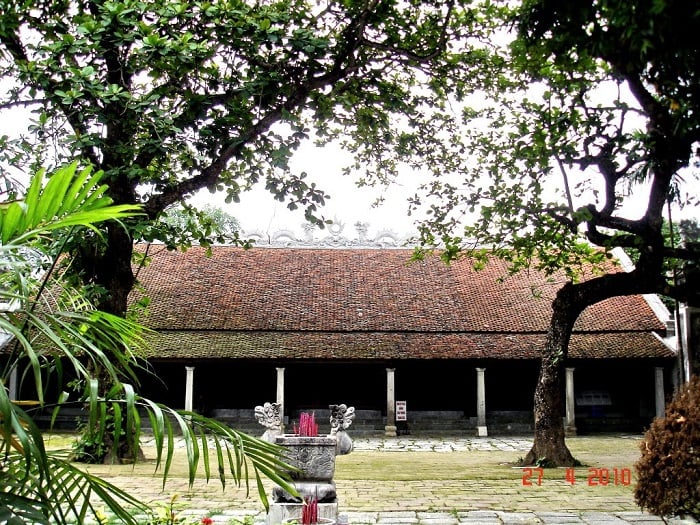
2.6. Tomb of King Le Thai To
50m from Lam Kinh is Vinh Lang – the tomb of King Le Thai To was built on a large flat ground with Chua mountain in front, Dau mountain behind, surrounded on both sides by two mountain ranges bearing the “tiger” status. to worship the dragon”.
The mausoleum has a size of 4.4m x 1m and is covered with earth and surrounded by chiseled stones. In front of the king’s mausoleum, there are 2 rows of statues of mandarins and 4 pairs of opposing stone statues (pistils, horses, rhinos, tigers) built firmly to guard the town.
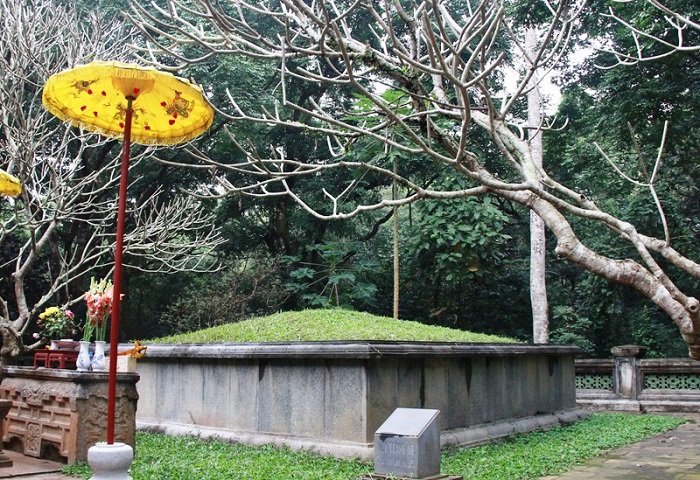
3. Lam Kinh’s antiquities display house
After visiting the palaces and tombs, don’t forget to stop by the antiquities gallery to learn more about the history of the Le Dynasty and the mysterious stories here!
In the display house, there are still preserved ancient artifacts of cultural and historical value such as: teapots of the Le Dynasty, copper pots, lotus-shaped incense bowls, leaf-shaped decorative bricks, terracotta roof tops, foundation bases. Bach bridge. All still retain the original image and are regularly cleaned carefully.
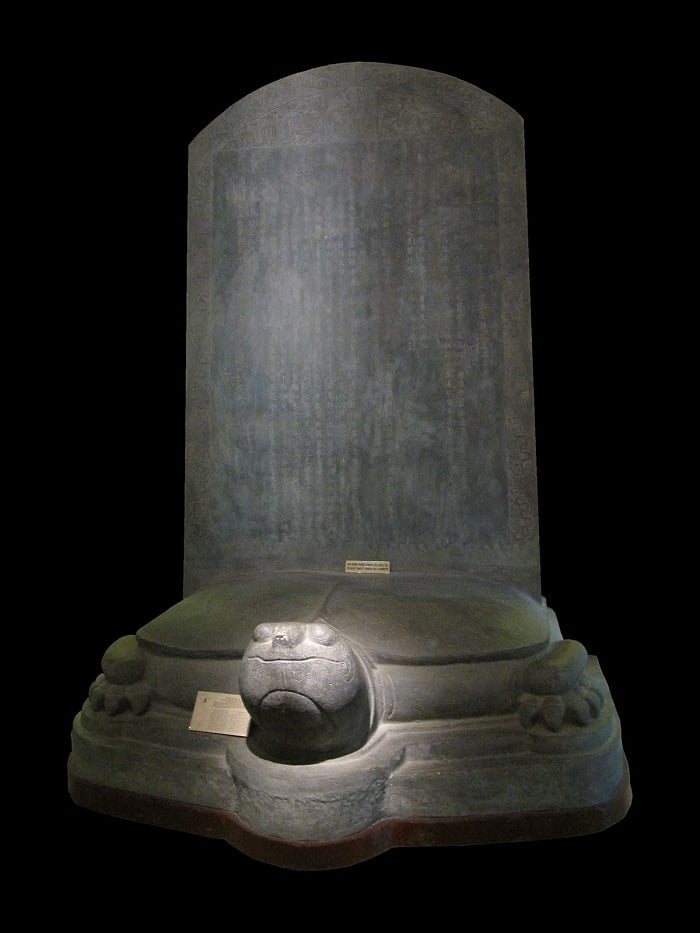
Besides ancient antiques, Lam Kinh also attracts visitors by thrilling legends. Typically, the legend of the laughing guava tree, when visitors touch and lightly tickle the trunk, the whole tree will shake and create a strong wind. Not only that, every time the guava tree “smiles” it will bring an indescribable feeling of relief and peace.
In addition, the story of an iron tree more than 600 years old suddenly shed all its leaves right after the project to restore the Lam Kinh Main Palace was approved in 2010. Strangely, all parts of the tree from the trunk, top to the base are all sized in accordance with the proposed restoration for the Main Hall. That coincidence surmises that the iron tree is on a mission to rebuild the palace for posterity.
4. Lam Kinh Festival
Lam Kinh festival is held annually on the death anniversary of King Le Thai To – the 22nd day of the 8th lunar month with a grandiose scale. The festival appeared and was held after the death of King Le Thai To and was buried in Lam Son to commemorate and honor the revered hero of the nation.
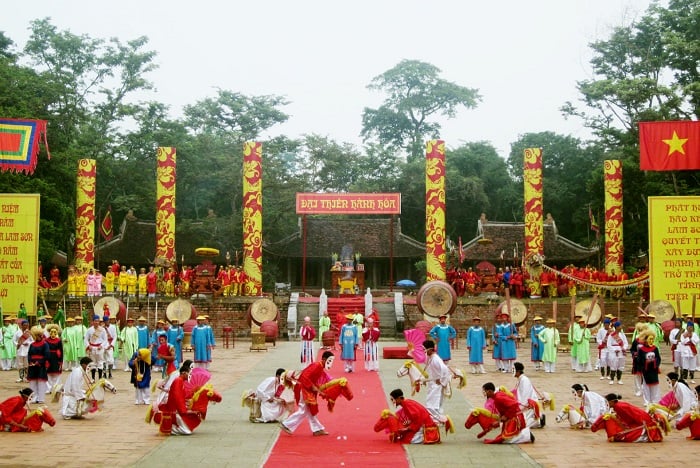
Lam Kinh festival is organized in 2 parts: the ceremony part and the festival part:
- The ceremony is held according to traditional rites, recreating activities in the old palace including: drums, festival chess, procession and rituals.
- The festival part includes cultural and entertainment activities, folk games, typically the performance of the Lung Nhai oath festival, Le Lai saving God, liberating Dong Quan citadel, King Le Thai To was crowned, and promoting Lam Son’s spirit. or wrestling, martial arts, cheo…
The festival took place vibrantly, attracting a large number of people and tourists from all over the world to attend.
Source: Collected internet.
Destinations near : Lam Kinh relic site
-
Travel The Citadel of Ho Vinh Loc
The citadel of the Ho Dynasty was the capital of Dai Ngu, located in what is now Thanh Hoa province
-
Travel Thanh Hoa Stork Island
Co commune is the name of a swamp with storks living in the territory of Tien Nong commune, Trieu Son district, Thanh Hoa province.
-
Travel Vinh Lang Beer
Located about 300m southwest of King Le's tomb, Vinh Lang stele is located southwest of Lam Kinh Main Palace.
-
Travel Temple of Le Loi Thanh Hoa
Le Loi temple is now located in Nang Cat village, Tri Nang commune, Lang Chanh district, Thanh Hoa province
-
Travel Vinh An Cave (Tien Son Cave) Thanh Hoa
Tien Son Cave is a famous cave in Thanh Hoa city, Thanh Hoa province, Vietnam
-
Travel Elephant Waterfall Thanh Hoa
Elephant waterfall is located in Thanh Van commune, Thach Thanh district, Thanh Hoa